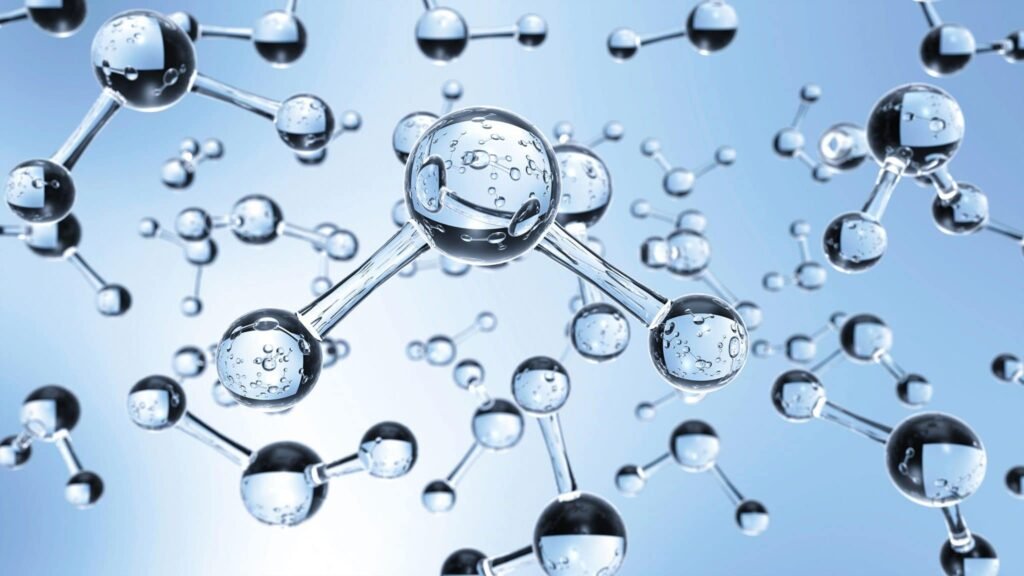All over the country, projects and achievements for the production of green hydrogen are increasing. Reminder of the processes with some examples.
Today, 95% of available hydrogen is produced from energy by steam reforming of natural gas: in the presence of superheated water vapor, the carbon atoms © of methane (CH4) dissociate and rearrange to form hydrogen. one side of dihydrogen (H2) and the other of carbon dioxide (CO2), with a negative carbon balance. Another possible process with ongoing experiments is the gasification and pyrolysis of biomass, particularly wood: burned at very high temperatures (1,200°C to 1,500°C), it releases gases which will separate and recombine, thus producing dihydrogen and carbon monoxide (CO), with a neutral carbon footprint, the biomass used being reconstituted. Obtaining hydrogen by thermochemical or photochemical decomposition of water or even biological production from algae or bacteria with a positive carbon balance gives rise to several experiments and research. But it is the electrolysis of water which today allows the production on a larger scale of hydrogen which is all the greener as the electricity used in this process is carbon-free.
Optimize electrolyzers
Many electrolysers are now in service or at the demonstrator stage with the aim of making them more efficient. The idea is to use “green” electricity to produce carbon-free hydrogen. Large electrolysers for industry coupled with wind turbines or photovoltaic power plants, medium-sized electrolysers for the diffuse industrial sector often with associated service stations or small electrolysers enabling a station to be supplied, such is the landscape that is emerging. For example, Morbihan Énergies has made a bet on producing green hydrogen from renewable energies. A station was created for this in Vannes-Luscanen in 2017. It is the first step in a series of projects supported by Morbihan Énergies with a view to developing hydrogen among communities and economic players in the department. , including the future Prat station, in Vannes, in collaboration with Engie, near the Michelin factory. It is also this project which was selected by ADEME as part of the national hydrogen deployment plan.
Hydrogen produced by biomass
An industrial demonstrator for the production of hydrogen from biomass is announced in 2021 in Strasbourg, with production capable of running around fifty buses.
Haffner Energy and Réseaux gaz de Strasbourg (R‑GDS) announced in August the creation of R‑Hynoca (no carbon hydrogen networks), a project using the thermolysis of biomass, at 400°C, with steam cracking of the gas produced, thus offering an alternative to electrolysis. The objective is to reach a cost of €5/kg from 2021 to drop to €3/kg in 2025. The installation should produce 650 kg/day, for an initial investment of 6 million euros. The Hynoca process only needs exogenous energy for the launch phases: it then powers itself, with a neutral carbon footprint. Its energy efficiency is close to 70%. The co-products (biochar in particular) can be used as fertilizers. Haffner, with around thirty energy production plants, mainly biomass, already to its credit, aims to install 80 hydrogen production stations of this type by 2023.
Biological and solar hydrogen
Much research is currently taking place on the production of hydrogen, in particular by photosynthesis or by hydrogenase, but also by solar energy. These techniques could in the future boost the production of hydrogen at competitive costs. Photosynthesis can be considered, with the two most important resources on our planet, water and the sun, as an energy source. The hydrogen production processes currently studied generally use two phases, an oxygenic phase of biomass growth and an anoxic phase of hydrogen production. Other ongoing research is on hydrogenases. They designate a class of enzymes that can reversibly catalyze the conversion of protons into hydrogen. They are found in certain cyanobacteria and certain algae. These photosynthetic organisms produce hydrogen from solar energy using water as a donor of electrons and protons without parallel release of CO2. Promising research, in economic and ecological terms, on this “biological” hydrogen production is currently being carried out by researchers from the CNRS and the CEA of Grenoble Alpes University, but also in England and Germany.
The Hypersolar company has developed technology to produce hydrogen using hydrogen solar panels, using a catalyst and a stabilizing coating. The company is also working on microparticle technology to make its panels more efficient. It is also possible to directly convert solar energy into hydrogen by photoelectrolysis, which produces hydrogen by illumination of a semiconductor.

